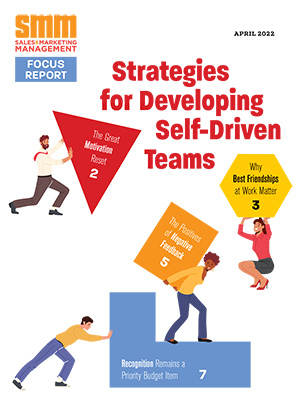There’s no going around it. The tug of war between sales and marketing is real, and it cripples productivity. At the same time, marketing and sales are ultimately after the same thing, and each side often looks to the other to help meet mutual objectives: business growth and ROI, to name a couple. So ask yourself, as sales and marketing pros, can we put our individual, temporary needs aside to see the bigger picture and end the rift? With such measurable gains as added time and cohesion attainable through a commitment to ongoing alignment, it’s certainly worth a shot.
The next question is, where do we start? This one’s a biggie. Without a realistic answer, our strategies will prove to be little else but the same old advisory fluff.
But let’s agree on what ties sales and marketing together in their day-to-day tasks in the first place. In today’s digital-first era, there’s one constant used in the makings of virtually all strategies: data. You knew this was coming. These days, it seems everyone who’s anyone gets a pass to the data party.
Tearing Down Walls
Tearing down the walls of ambiguity, in the context of this discussion, we can define data as the information responsible for facilitating sales and marketing outcomes, or the data sets driving and delivering opportunities for both teams to excel at their duties. Breaking this definition down even further, we can easily drill down to the particulars to reveal the contents of customer data inside.
In its basic form, customer data consists of contacts within selected accounts. And it’s this very data that’s responsible for successful sales and marketing strategies. Cue the “Aha!” moment. The collecting, fine-tuning, and managing of this holy grail of customer data is at the root of our dreaded sales and marketing divide. The most common disputes between sales and marketing tend to revolve around divergent strategies for revenue generation, often driven by the need for more of the right leads.
Furthermore, consider today’s CRM and marketing automation platform scene that’s teeming with diverse technologies and disparate data sets. In this sort of disjointed environment, the friction caused by a lack of defined processes contributes to frustrated sales and marketing teams, fewer right leads, and missed revenue goals. The fix requires the opposite of disorder: alignment.
Easier said than done? Of course. But we’ve just identified our starting point (customer data), so now we can work it – perfect it – to achieve sales and marketing alignment.
Cohesion Isn’t an Option
Here’s what two industry leaders who excel at their craft have to say on the forces of data, parlaying their experience to expand on what has proven constructive and valuable for sales and marketing.
Mike Volpe, CMO of Cyberreason, a Boston-based cyber security software company specializing in enterprise attack prevention, puts it this way: “Today, the word data is everywhere. And it means different things to everyone. But the data I care about unites sales and marketing through a unified approach to achieving the objectives of both. I know that a centralized solution dedicated to enhancing the process through updated contact info, or the trigger data responsible for the success of any lead gen initiative, is one that will make the lives of my teams easier. In my mind, that’s a huge step in the right direction and a leap toward true alignment.”
Mark Kosoglow, VP of Sales at Outreach, a sales engagement platform based in Seattle, reiterates the need for a similar strategy: “It’s imperative for sales and marketing to have cohesion in their workflows. This entails being on the same page with the resources and best practices involved in any given outreach strategy, which can vary from cold calling to demand gen on the part of marketing. As long as a flow of mutually advantageous information exists, and the right data is passed around on a timely basis, the two teams will continue to achieve – and exceed – joint goals.”
Albeit coming from different worlds, the insights of Volpe and Kosoglow share notable, undisputed similarities. Both say customer data is the lifeblood of sales and marketing alignment.
Volpe and Kosoglow will be among more than 25 expert speakers at the ZoomInfo 2017 Growth Acceleration Summit in Boston, Sept. 13-14. The conference will help sales and marketing pros see customer data differently – as the key to closing the rift between them. Attendees will gain actionable insight into the future of data, as well as best practices and growth strategies for sales and marketing teams to achieve and maintain genuine solidarity. Volpe’s session, “Dare to be Great: How to Build a World-Class Marketing Team,” will delve into his experiences with initiatives that took marketing to the next level. Kosoglow’s session, “How Operations Can Be the Driving Force of Internal Alignment,” will look at successes from the angle of sales.
Anna Fisher is the Senior Director of Marketing and Head of Lead Generation at ZoomInfo, an Inc. 5000 company whose Growth Acceleration Platform combines the most comprehensive and actionable B2B database with integrated tools to help companies optimize sales and marketing effectiveness, jump-start growth and maximize profitability.


